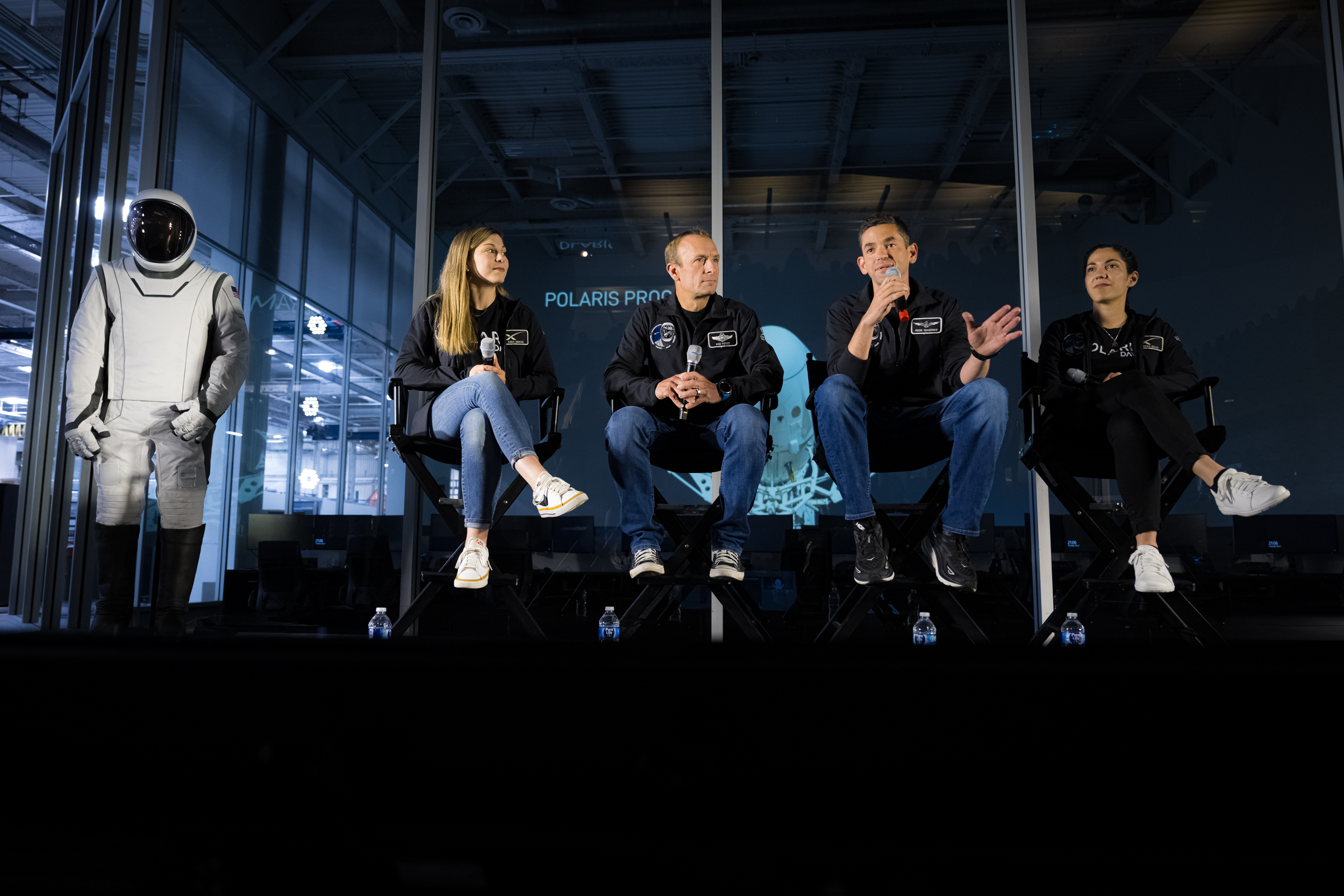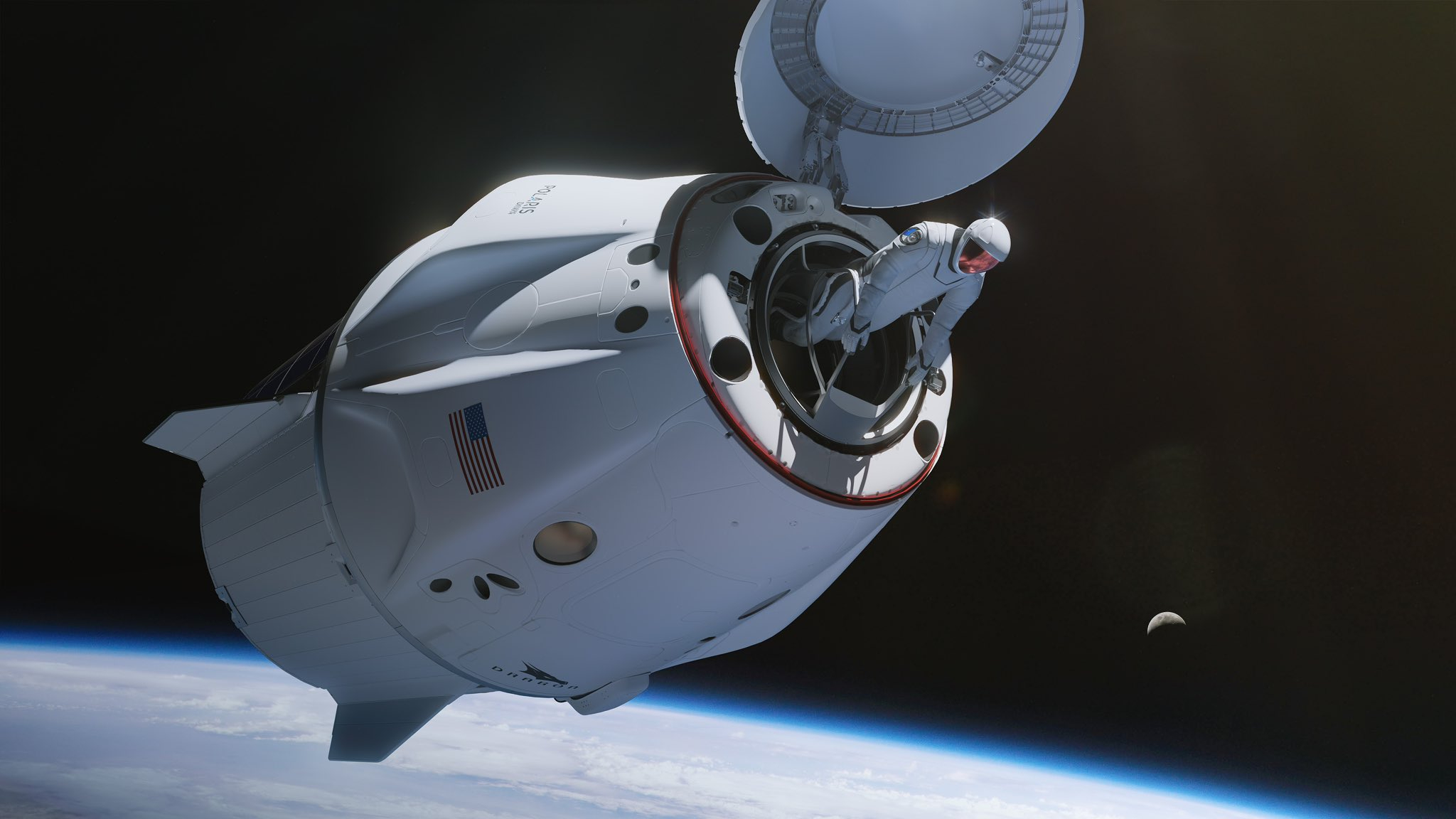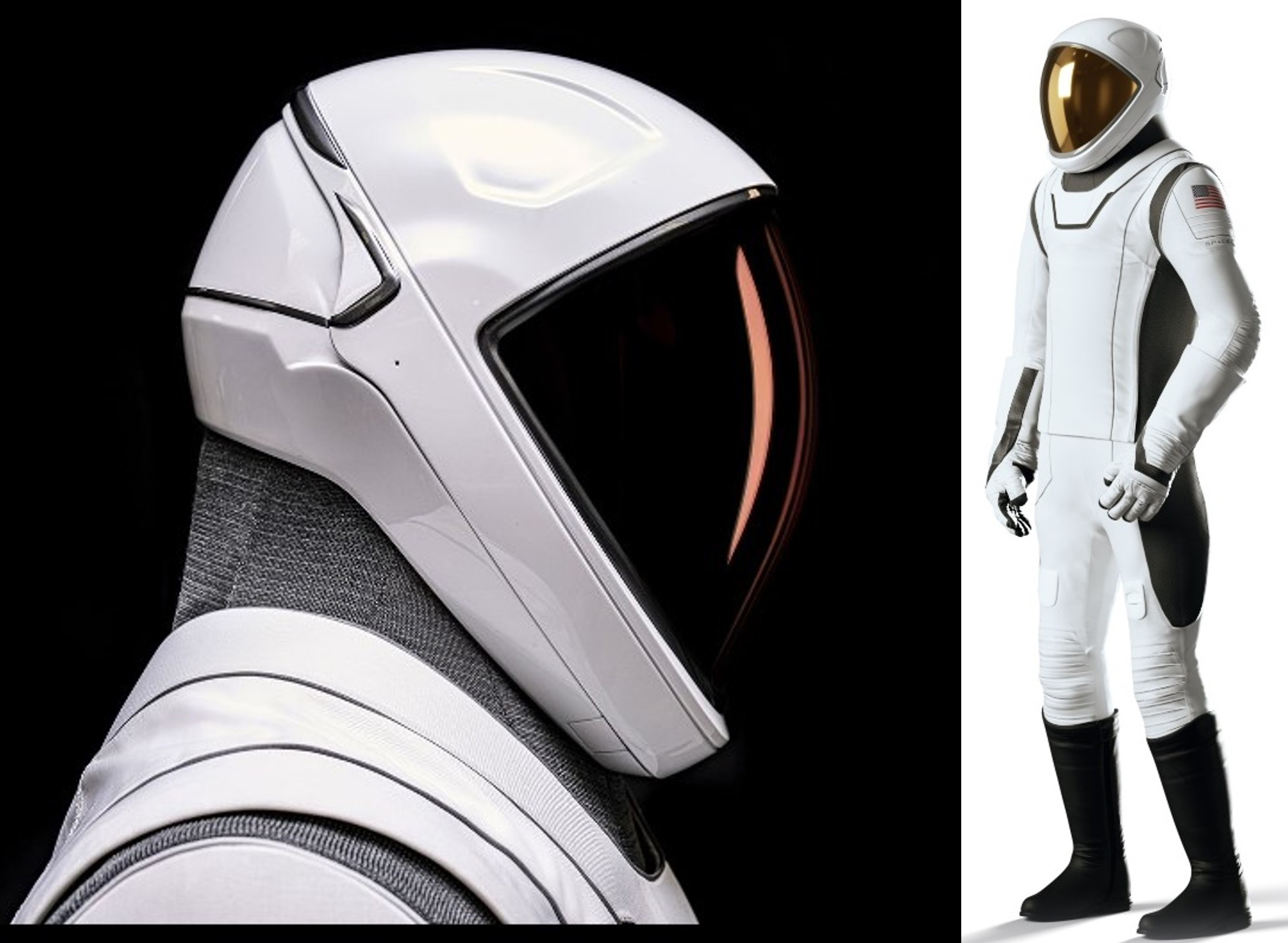SpaceX reveals new EVA suit for 1st private spacewalk on upcoming Polaris Dawn spaceflight (video)
It's a slightly thicker and more high-tech version of the company's first spacesuit.
SpaceX's next private astronaut launch is slated for this summer, and a major component crucial to its success has finally been revealed.
The mission, Polaris Dawn, is poised to involve the first extravehicular activity (EVA) tasks to be performed by private astronauts, which means SpaceX needed to build its own spacesuit capable of protecting wearers from the harsh environment of space. Now, we've finally gotten our first look at the design.
The new suit was unveiled on SpaceX's website and social media channels Saturday (May 4). The announcement was accompanied that afternoon by a "spaces" discussion with SpaceX engineers and Polaris Dawn crew members on X, formerly Twitter, which SpaceX CEO Elon Musk bought in 2022.
Related: Polaris Dawn crew prepares for world's 1st private spacewalk with SpaceX

SpaceX's EVA suit looks much like the company's IVA suit (intravehicular activity), which was designed to be worn within spacecraft during launches and landings, but not in the vacuum of space. The new EVA suits contain material enhancements and joint improvements aimed at increasing astronauts' mobility while also protecting them from the cold, airless void outside their spacecraft.
"There was a lot of work on both the materials of the suit — developing a whole new layer that we needed to add for thermal management — as well as looking at the thermal condition for the crew members themselves, and making sure that they were at a comfortable temperature inside the suit," said the manager of SpaceX's spacesuit team Chris Trigg during the discussion on X.
The suits also incorporate technology used in other parts of SpaceX's manufacturing gamut. "We have a lot of different resources at our disposal here," Trigg said. "There's some thermal material that we ended up using on the boot, which was developed actually for Falcon and Dragon, and is used on the interstage on Falcon, and on the trunk of Dragon."
Get the Space.com Newsletter
Breaking space news, the latest updates on rocket launches, skywatching events and more!
The SpaceX Extravehicular Activity (EVA) suit → https://t.co/z2Z9iVpt6x #Maythe4thBeWithYou pic.twitter.com/peETlLCcDPMay 4, 2024
Trigg also described a new heads-up display in the helmet design, allowing astronauts to view data about their suits' internal temperature, humidity and pressure; the display also exhibits a mission clock to monitor the durations of particular EVA tasks. "Aesthetically, it may look similar to the IVA, but what they did under the hood is extraordinary," said Jared Isaacman, mission commander for Polaris Dawn, during the discussion. In collaboration with SpaceX, Isaacman is also funding the mission.
The billionaire previously funded and commanded SpaceX's commercial Inspiration4 mission in 2021, which was the first all-civilian spaceflight. For Inspiration4, beyond in-flight research, Isaacman was motivated to charter the flight in an effort to raise money for pediatric cancer research center St. Jude Children's Research Hospital.
Polaris Dawn, the first of three possible missions for Isaacman's Polaris Program, is also raising money for St. Jude's, and aims take human spaceflight to a new level. "The Polaris program contemplates up to three missions," Isaacman said Saturday, "culminating with the first crewed flight of Starship."
Related: Meet the four private Polaris Dawn astronauts SpaceX will launch into orbit this year

Isaacman will be joined on Polaris Dawn by retired United States Air Force Lieutenant Colonel Scott "Kidd" Poteet, who will serve as the mission pilot, and mission specialists Sarah Gillis and Anna Menon, both lead operations engineers at SpaceX. The quartet hopes to push the boundaries of space travel with this flight, which will take them higher than any human has flown since the final Apollo moon landing mission more than 50 years ago.
Menon described the mission's flight profile and timeline during the May 4 discussion on X:
"We will be essentially launching into a highly elliptical orbit where our perigee is at about 190 kilometers, but our apogee is at about 1,200 kilometers. We will then, after a number of orbits, be raising our apogee up to about 1,400 kilometers … The benefit of being at this high altitude is that we can better understand the impacts of that environment — that higher radiation environment, for example — on both the human body … as well as on the spacecraft. After a number of orbits there, we will complete all the research that we were intending to do, and then we will lower our apogee back down to a nice coasting orbit around 700 kilometers, where we will complete the rest of our mission objectives including the spacewalk."

Polaris Dawn will last five days, during which time the crew plans to complete up to 40 experiments. For instance, the team intends to capture X-ray images of radiation in the Van Allen Belts — ring-shaped zones of energetic charged particles around Earth — investigate the mechanisms that cause motion sickness in space and test hardware, including the new EVA suit and the Crew Dragon capsule itself.
Because the original Crew Dragon design doesn't feature an airlock, the entire cabin must be depressurized in order for the crew to conduct EVA tasks. This has led to major modifications that allowed the capsule's interior to withstand the hard vacuum. SpaceX also added a nitrogen repressurization system for the conclusion of the mission's EVA duties. Further, hand rails and footholds were installed inside the spacecraft, and a ladder interface at the hatch's opening was implemented to facilitate astronaut egress.
Rather than fit each Polaris Dawn astronaut with an IVA flight suit as well as a new EVA suit, the crew will don SpaceX's EVA spacesuit for both launch and landing, as well as during the mission EVA.
"We'll vent the cabin down to vacuum and then we will undertake an EVA operation where we hope to learn an awful lot about our suits and the operation associated with it," Isaacman said, adding "It's the first commercial EVA. It's the first time you don't have government astronauts undertaking such a mission. And that's important because we are going to get to the moon or Mars someday. We're going to have to get out of our vehicles, out of the safety of a habitat and explore, and build and repair things.
"And that means the knowledge for spacewalks and EVAs has to go beyond just the the few that it exists with today."
Join our Space Forums to keep talking space on the latest missions, night sky and more! And if you have a news tip, correction or comment, let us know at: community@space.com.

Josh Dinner is the Staff Writer for Spaceflight at Space.com. He is a writer and photographer with a passion for science and space exploration, and has been working the space beat since 2016. Josh has covered the evolution of NASA's commercial spaceflight partnerships and crewed missions from the Space Coast, as well as NASA science missions and more. He also enjoys building 1:144-scale model rockets and human-flown spacecraft. Find some of Josh's launch photography on Instagram and his website, and follow him on X, where he mostly posts in haiku.
-
Rob77 Finally! An EVA suit that isn't a design from the 1960's. Nice to see we are progressing (thank you SpaceX), look forward to see how they will design the oxy tank to work with that suit.Reply -
skynr13 It's amazing how light weight and comfortable it looks! It seams Elon is as good at designing space suits as he is with rockets!Reply









